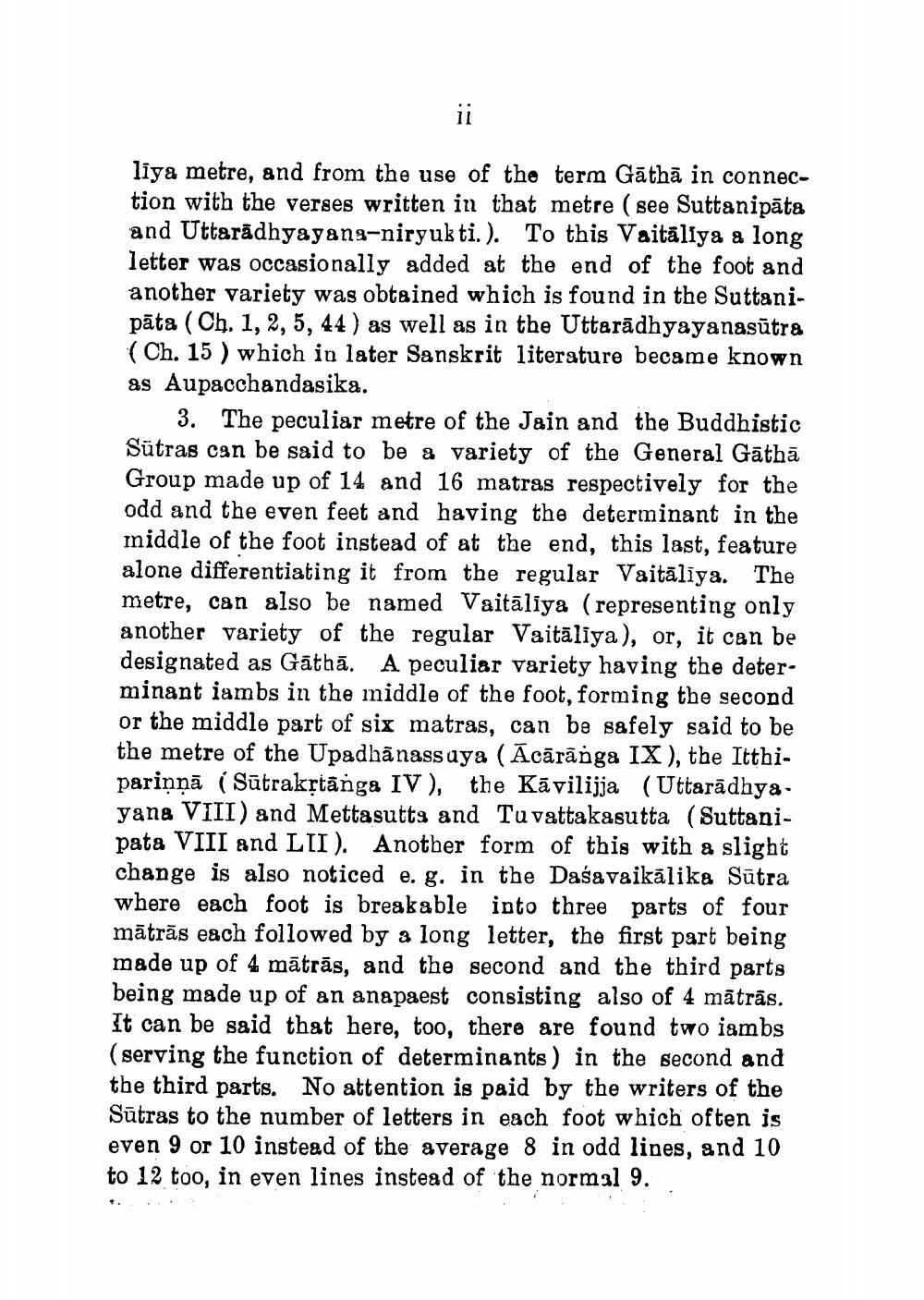________________
11
liya metre, and from the use of the term Gāthā in connection with the verses written in that metre (see Suttanipāta and Uttarādhyayang-niryukti.). To this Vaitāllya a long letter was occasionally added at the end of the foot and another variety was obtained which is found in the Suttanipāta ( Ch. 1, 2, 5, 44 ) as well as in the Uttarādhyayanasūtra (Ch. 15 ) which in later Sanskrit literature became known as Aupacchandasika.
3. The peculiar metre of the Jain and the Buddhistic Sütras can be said to be a variety of the General Gāthā Group made up of 14 and 16 matras respectively for the odd and the even feet and having the determinant in the iniddle of the foot instead of at the end, this last, feature alone differentiating it from the regular Vaitālīya. The metre, can also be named Vaitāliya (representing only another variety of the regular Vaitāliya), or, it can be designated as Gāthā. A peculiar variety having the determinant iambs in the middle of the foot, forming the second or the middle part of six matras, can be safely said to be the metre of the Upadhānassuya ( Ācārānga IX), the Itthipariņņā ( Sūtrakṛtānga IV), the Kāvilijja (Uttarādhyayana VIII) and Mettasutts and Tuvattakasutta (Suttanipata VIII and LII). Another form of this with a slight change is also noticed e. g. in the Daśavaikālika Sūtra where each foot is breakable into three parts of four mātrās each followed by a long letter, the first part being made up of 4 mātrās, and the second and the third parts being made up of an anapaest consisting also of 4 mātrās. It can be said that here, too, there are found two iambs (serving the function of determinants) in the second and the third parts. No attention is paid by the writers of the Sūtras to the number of letters in each foot which often is even 9 or 10 instead of the average 8 in odd lines, and 10 to 12 too, in even lines instead of the normal 9.




